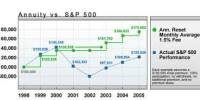The trading system has become on-line, fully automated, screen-based. Open outcry is now outmoded and virtually eliminated from the system. it is a system designed to automatically input orders based on computer algorithms or “expert systems” having decided what trades to place.
It has made the stock market more vibrant and transparent. It has reduced cost, time and risk involved. A large number of participants irrespective of their location, can trade with one another anonymously and simultaneously, providing equal access to every player with orders- big or small, thus improving the depth and liquidity of the marker. The system provide perfect audit trail, facilitating dispute resolution. Given the size and complexity of the country, we could click the system and stabilize it successfully across the country.
An automated trading system (ATS) is a computerized system for matching orders in securities. The main function of an ATS is to accept orders and match these according to the trading rules. Trading rules vary between exchanges, and even more between countries.
This means that an ATS typically has to:
- Accept orders of whatever types are allowed.
- Reject orders that are not allowed.
- Match orders according to quite complex rules.
- Determine the prices at which certain orders match (for example, if a limit buy at 100p matches a limit sell at 90p) according to trading rules.
- Expire orders that reach built-in time limits.
- Pass details of trades to clearing and settlement systems.
- Provide market information.
- Provide information and tools to market regulators.
- Enforce automatic trading halts and other restrictions.
Advantages of Automated trading
Several advantages are afforded to the trader through the implementation of an automated trading approach. Automated trading (i.e. automated trading systems) can be used to execute complex trade management principles, reduce human error and define quantifiable “edges.”
Trade Management
The process of a trade’s execution consists of several elements, with each being essential to the success or failure of the trade. Automated trading provides opportunities for enhancement in these areas.
Removal Of Human Error
As a trader interacts with the market, several challenges arise that are attributed to “human error.” Even though a trader may have developed a successful trading system based upon discretion, the trader’s execution of the system can come into question at any given time.
Disadvantages of Automated trading
Although the practice of automated trading is widespread and its influence is extensive among market participants, there are several large drawbacks that must be accounted for before a trader modifies the existing trading approach to become fully automated.
Hardware Failure
For an automated trading system to be a successful one, several key inputs act as prerequisites. Uninterrupted electrical access is needed to run the computers that execute the trader’s automated systems. Computer hardware used to operate the automated trading system must remain in proper working condition. Routers, dedicated hard drives and constant Internet connectivity are all required. Gaps or lag in electricity or Internet speeds can pose major problems to automated system performance.
Flawed Trading System Development
One of the key characteristics of an automated trading system is the methodology by which it was created. There is often a heavy reliance on the results derived from historical data analysis and backtesting to create a statistically quantifiable trading system. Although the ability to test a system’s validity upon historical data sets is a powerful tool, there are pitfalls that can cause the results of testing to be misleading and largely inaccurate.
Information Source:
















